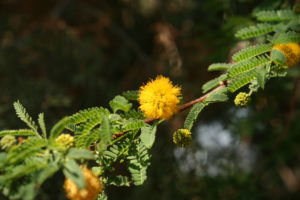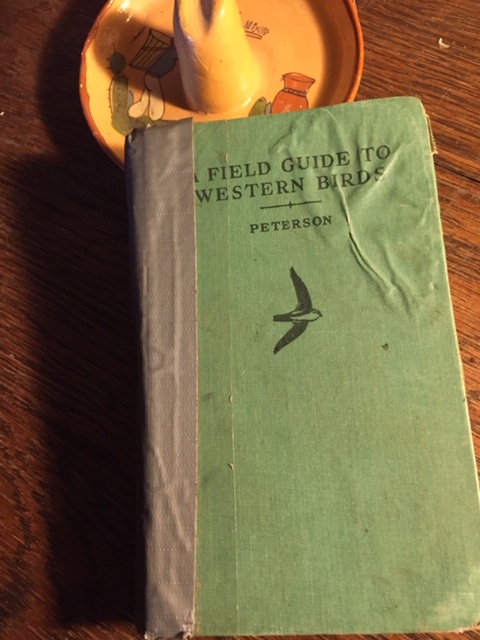
Sweet acacia is Vachellia farnesiana (Acacia farnesiana) and is in the pea family Fabaceae. I have never seen it in habitat, though as I mentioned in this show, friends called me years ago to tell of me a plant they saw down near Ruby. That would be exactly where Arizona Flora lists it, there and on the west side of the Baboquivari Mountains. I think a trip to one of those locations is in order, don’t you? But listen, I’m most familiar with sweet acacia…oh, it does have another common name, huisache, derived from a nahuatl word meaning many thorns and it lives up to that…Anyway, I’m most familiar with it in urban landscapes. My goodness it was so overused years ago and it seemed every median and right of way in Tucson was planted in huisache. I noticed after awhile that two varieties were getting planted. They had different forms and even flowered at different times and I noticed that one variety was more cold hardy than the other. I suspect the frost tender and earlier bloomers were from seed of a more tropical variety and perhaps the freeze hardy and later bloomers were of a more desert southwest source. Well, that’s my theory and it’s probably a little more complicated than that, but if you were to look up sweet acacia you will see that there is V. farnesiana and V. farnesiana var. farnesiana…two different varieties.
The golden yellow balls of flowers are so sweet smelling no matter the variety. I think I mentioned that the flowers have been a source for making perfume for many centuries and huisache is still cultivated just for that purpose. Here in the borderlands our more common whitethorn acacia (Vachellia constricta) has sweet scented flowers that definitely rival those of sweet acacia. That gives you a choice when you are trying to fill your personal habitat with native fragrance.
A couple notes: the photos are mine of the volunteer sweet acacia that came up in our yard. You can see from the young unopened flowers that each ball is numerous flowers. I stuck my paw in the one photo to give you some scale.


In the early 1990s when this story and song came about I was poking around the West Branch starting at Ajo Road and north...

I was mistaken about Arivaca’s vulture celebration. It is not early March, but later in the month. Apologies to them, but hey, the good...

Loggerhead shrikes are more common in the winter out where we live in Cochise County, Arizona. Some winters and springs it seems there is...